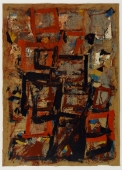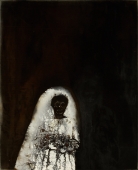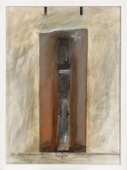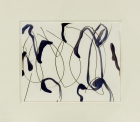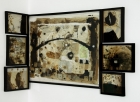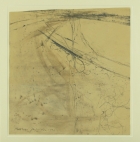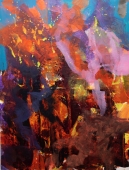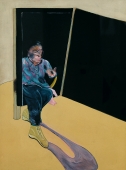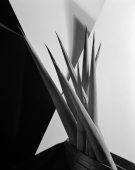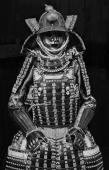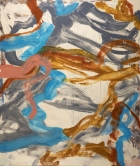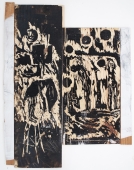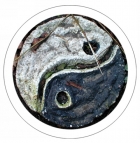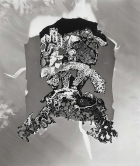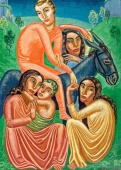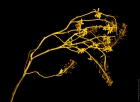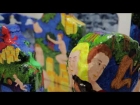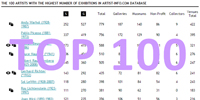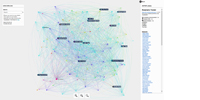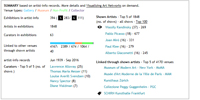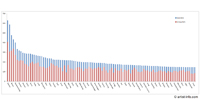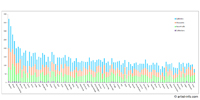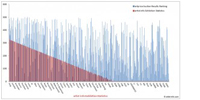
Artist | Gotthard Graubner (1930 - 2013)
https://www.artist-info.com/artist/Gotthard-Graubner
Biography
Biography
born in 1930
About the work (english / deutsch)
About the work (english / deutsch)
Triptychon Venezia
The paintings were created in 1982 on the occasion of the Venice Biennial, and during the summer they were exhibited there - in the main room of the West German pavilion, where they had also been painted.
Graubner's paintings exhibit a quality of colour for which it is hard to find words und which could only be inadequately described in terms of monochromy (i.e. contrasting colours andforms are renounced in favour of only one colour). For here the colour is not simply reduced to one clearly definable colour. Rather, each individual painting pinpoints a field of colour that belongs to a particular quality of colour, a field which is not uniform but instead contains a subtle multiplicity of colours. The colour has the feel of a composition about it owing to the application of many thin layers of paint on a cushion-like padded ground. Thus, practically each step in the process of the composition is preserved in the next step and accordingly remains partially recognizable. The result, richly textured and with numeros hues, is a quality of colour made up of countless constituent elements, which, owing to the specific way in which the paint has been applied, form cloudy, vibrant structures that do not crystallize into one particular formal shape.
Referring to the character of his painting, Graubner has rightly stated that he wishes: "to free colour of all literary content - pink does not signify skin, green is not nature and grey is not sadness. Colour has a life of its own, its own sensibility," and he thereby emphasizes its autonomy. Yet another observation he made in the same context is no less valid: "That which is individual, that which is social and that which is psychological are each embedded in the medium concerned." As a consequence, it appears justified to inquire into the role played by such factors in his painting over and above the pure articulation of colour. In the present instance the major factor involved is Venice as a natural and cultural phenomenon - a twofold colouristic challenge that Graubner took up while working on his contribution to the Biennial.
German text by Matthias Bleyl / Translation by Jeremy Gaines
(Extract - Full printed version available in the Museum)
MMK - Museum für Moderne Kunst, Frankfurt am Main
Triptychon Venezia
Die Gemälde entstanden 1982 anläßlich der Biennale in Venedig und wurden während des Sommers im Hauptraum des Pavillons der Bundesrepublik Deutschland - in dem sie gemalt worden waren - ausgestellt.
Graubners Gemälde zeigen eine sprachlich äußerst schwer beschreibbare Farbigkeit, die mit dem Begriff der Monochromie (d.h. Aufgabe von Farb- und Formkontrasten zugunsten nur einer Farbe) nur unzureichend bezeichnet wäre. Hier ist die Farbe nämlich nicht auf eine klar benennbare Farbe reduziert. Die einzelnen Gemälde umschreiben vielmehr jeweils einen einer bestimmten Farbigkeit zugehörigen Farbbereich, der nicht einheitlich ist, sondern eine subtile Vielfarbigkeit enthält. Die Farbe erscheint durch den ganzflächigen Auftrag vieler dünner Farbschichten auf kissenartig gepolsterten und dadurch nicht nur in der Fläche, sondern auch räumlich wirksamen Farbträgern als eine zusammengesetzte, wobei praktisch jeder Schritt dieses Zusammensetzens in den nachfolgenden erhalten und damit partiell erkennbar bleibt. Das Ergebnis ist eine vieltonige, reichgestimmte Farbigkeit zahlloser Komponenten, die - infolge des besonderen Farbauftrags - wolkige, bewegungshaltige, formal nicht verfestigte Strukturen ausbilden.
Graubner stellte in bezug auf den Charakter seiner Malerei zu Recht fest: "Die Farbe von jedem literarischen Inhalt befreien, Rosa ist nicht Haut, Grün ist nicht Natur, Grau ist nicht Traurigkeit. Farbe besitzt eigenes Leben, eigene Sensibilität" und unterstrich damit ihre Autonomie. Andererseits gilt auch seine im gleichen Zusammenhang geäußerte Feststellung: "Individuelles, Gesellschaftliches, Psychologisches findet sich eingebettet ins Medium", weshalb es gerechtfertigt erscheint, nach solchen Faktoren jenseits der reinen Farbartikulation seiner Gemälde zu fragen. In diesem Fall ist dies vordringlich das Natur- und Kulturphänomen Venedig, eine doppelte koloristische Herausforderung, der sich der Maler während der Arbeit an seinem Biennalebeitrag gestellt hat.
Den Bildern ist wegen ihrer dreidimensionalen Präsenz und der diffus-monochromen Farbe der Charakter einverleibter Farberscheinung zu eigen, und dies gilt in sehr besonderer Weise auch für das Natur- und Kulturphänomen Venedig.
Text von Matthias Bleyl
(Auszug - Der vollständige Text ist als Informationsblatt beim Museum erhältlich)
MMK - Museum für Moderne Kunst, Frankfurt am Main
Bibliography
Bibliography
Bleyl, Matthias: Gotthard Graubner. Farbraumkörper der XL. Biennale Venedig 1982. Verlag Wilk, Friedrichsdorf, 1991.
ISBN: 3-88270-457-8
 offers / Requests offers / Requests  |
About this service |
|---|
 Exhibition Announcements
Exhibition Announcements
 Visualization |
Learn more about this service | ||
|---|---|---|---|
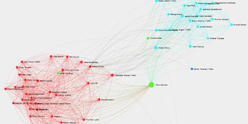
Interested in discovering more of this artist's networks?
3 easy steps: Register, buy a package for a visualization, select the artist.
See examples how visualization looks like for an artist, a curator, or an exhibition place: Gallery, museum, non-profit place, or collector.

Exhibition History

|
SUMMARY based on artist-info records. More details and Visualizing Art Networks on demand. Venue types: Gallery / Museum / Non-Profit / Collector |
||||||||||||
| Exhibitions in artist-info | 189 (S 46/ G 143) |
Did show together with - Top 5 of 2120 artists (no. of shows) - all shows - Top 100
|
||||||||||
| Exhibitions by type | 189: 85 / 45 / 53 / 6 | |||||||||||
| Venues by type | 117: 38 / 36 / 39 / 4 | |||||||||||
| Curators | 52 | |||||||||||
| artist-info records | Apr 1958 - Jul 2023 | |||||||||||
|
Countries - Top 5 of 12 Germany (138) Switzerland (9) United States (6) Belgium (4) Italy (4) |
Cities - Top 5 of 66 Frankfurt am Main (21) Berlin (15) Bochum (15) Düsseldorf (13) Hamburg (11) |
Venues (no. of shows )
Top 5 of 117
|
||||||||||
Curators (no. of shows)
Top 5 of 52
|
| Von der Heydt-Museum | G | Apr 2022 - Jul 2023 | Wuppertal | (131) | +0 | |
| Bruns, Anika (Curator) | +0 | |||||
| Eickhoff, Beate (Curator) | +0 | |||||
| Kunstmuseum Stuttgart | G | Jul 2017 - Nov 2017 | Stuttgart | (96) | +0 | |
| Groos, Ulrike (Curator) | +0 | |||||
| Friese, Klaus Gerrit (Curator) | +0 | |||||
| Sammlung Marli Hoppe-Ritter | G | May 2017 - Sep 2017 | Waldenbuch | (20) | +0 | |
| Hoppe-Ritter, Marli (Curator) | +0 | |||||
| Kok, Hsiaosung (Curator) | +0 | |||||
| Elke Dröscher Kunstraum Falkenstein | G | Oct 2016 - Nov 2016 | Hamburg | (30) | +0 | |
| Galerie Leu | G | Apr 2016 - Jun 2016 | München | (11) | +0 | |
| Stedelijk Museum Amsterdam | G | Jul 2015 - Nov 2015 | Amsterdam | (214) | +0 | |
| Keep reading |

















